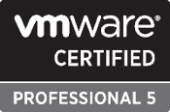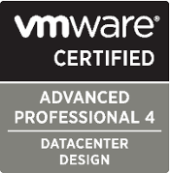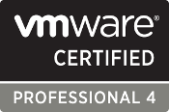
VMware vSphere Update 2, View 4.x Issues
June 17, 2010Right on the heels of vSphere 4 Update 2, a flurry of twitter and blog postings suggestion caution if upgrading a VMware View 4.x environment. Now, VMware has updated its KB to include a workaround for those needing to move to Update 2 for the feature and hardware support benefits but can’t afford to break their PCoIP-based View environment: in short, it’s all VMware Tools fault! Seems the SVGA drive in VMware Tools for Update 2 has a problem with PCoIP – preventing desktops from connecting.
Now that makes some sense given the fact that VMware is quite adamant about the ORDER in which VMware Tools, .NET framework and the View Agent must be installed. The current options for PCoIPers out there needing Update 2 are three-fold:
- Don’t upgrade VMware Tools;
- Upgrade VMware Tools with “Advanced Options” including
- For x86 guests:
/s /v “/qn REINSTALLMODE=voums REINSTALL=WYSE,VMXNet,
VMCI,Mouse,MemCtl,Hgfs,VSS,VMXNet3,vmdesched,ThinPrint,Sync,
PVSCSI,Debug,BootCamp,Audio,Buslogic,VICFSDK,VAssertSDK,
Toolbox,Upgrader,GuestSDK,PerfMon,Common,microsoft_dlls_x86,
ArchSpecific”
(line breaks included for formatting only) - For x64 guests:
/s /v “/qn REINSTALLMODE=voums REINSTALL=WYSE,VMXNet,
VMCI,Mouse,MemCtl,Hgfs,VSS,VMXNet3,vmdesched,ThinPrint,Sync,
PVSCSI,Debug,BootCamp,Audio,Buslogic,VICFSDK,VAssertSDK,Toolbox,
Upgrader,GuestSDK,PerfMon,Common,microsoft_dlls_x64,ArchSpecific”
(line breaks included for formatting only)
- For x86 guests:
- Use RDP (not really an option for PCoIP environments)
If you’re already STUNG by the VMware Tools, the KB has a procedure for back-tracking the SVGA driver after VMware Tools for Update 2 has been installed. Here it is:
For customers that are experiencing the issue and want to continue using PCoIP, use this workaround:
Note: VMware recommends that you have VMware View 4.0.1 installed prior to performing these steps.
- Log in to the affected virtual machine(s) with Administrator rights. This is any virtual machine that has the VMware Tools shipped with ESX 4.0 Update 2 installed.
- Rename the C:\Program File\Common Files\VMware\Drivers\Video folder to C:\Program File\Common Files\VMware\Drivers\Video-OLD.
- From a working virtual machine, copy the C:\Program File\Common Files\Vmware\Drivers\Video folder to C:\Program File\Common Files\Vmware\Drivers\ on an affected virtual machine.
- Click Start > Settings > Control Panel > System.
- Click the Hardware tab and click Device Manager.
- Expand Display Adapters.
- Choose VMWARE SVGA II. Right-click on it and choose Properties.
- Click the Driver tab. You are presented with the SVGA driver properties.
The version is 11.6.0.34 (Driver Date 01/03/2010).
- Click Update Driver. The Hardware Update wizard displays.
- When prompted with the question, “Can windows connect to Windows Update to search for software?”, click No, not at this time and click Next.
- When prompted with the question, “What do you want the wizard to do”, click Install from a list or specific location (Advanced) and click Next.
- Click Don’t search. I will choose the driver to install and click Next.
- On the next screen, you are presented a list of two or more VMWARE SVGA II Versions to choose from. For example:
VMWARE SVGA II Version: 11.6.0.31 (21/09/2009)
VMWARE SVGA II Version: 11.6.0.32 (24/09/2009)
VMWARE SVGA II Version: 11.6.0.34 (01/03/2010)Choose VMWARE SVGA II Version: 11.6.0.32 (24/09/2009).
- Click Next. The driver begins installing.
- Click Continue Anyway when Windows notifies you that VMware SVGA II has not passed Windows logo testing.
The driver install completes.
- Click Finish.
- Click YES when prompted to restart your computer.
- Verify that PCoIP is now working.
Note: VMware is investigating a permanent fix for the issue so our customers can upgrade to ESX 4.0 Update 2 without experiencing this issue.
– VMware KB1022830, 6/17/2010





